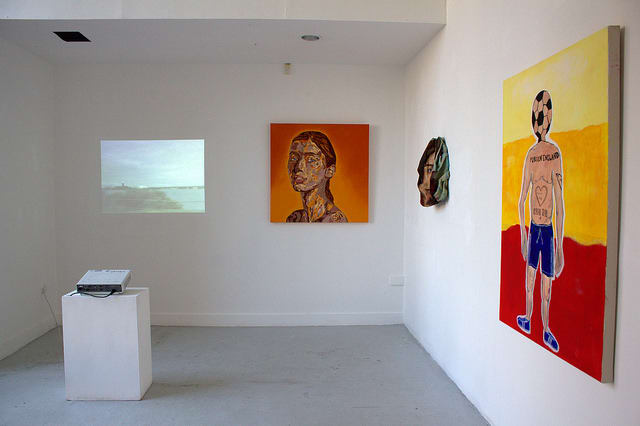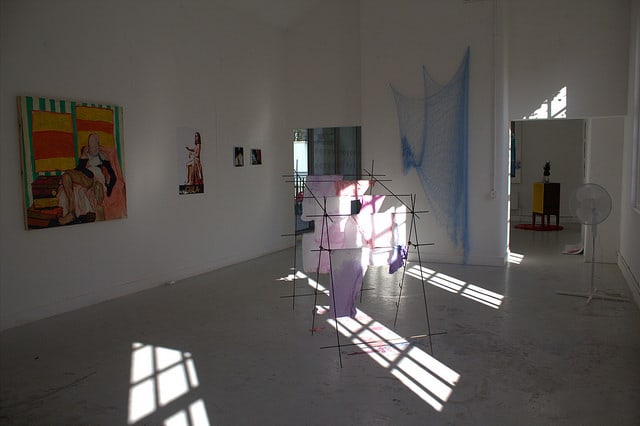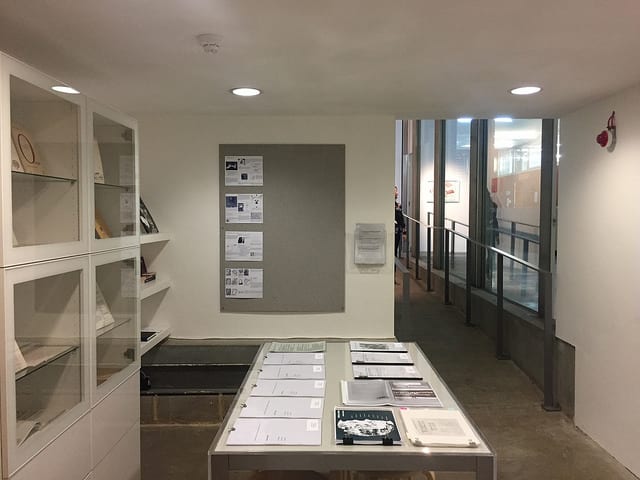Raffaella Mariadriana Matrone, from Naples, is about to complete an MA in Curating & Collections. We caught up with Raffaella to hear her insights on studying at Chelsea and to find out how being a UAL student has prepared her for a curatorial career…
If you could choose three words to describe your time at Chelsea, what would they be?
Fast-paced, prolific, growth!
Tell us about how you came to choose this particular course of study..
My interest in curating started in 2016, when I had the opportunity to work at an NGO in Zagreb, followed by co-curating an exhibition in Vienna. I was finishing my BA in Arts Management in Italy and wasn’t quite sure about what steps I should take next.
I felt like curating was the right thing for me, although I didn’t know much about it. The only solution seemed to be to specialize in curating on an academic level and, after a lengthy period of researching different institution and courses, I finally applied to Chelsea and started MA Curating & Collections in October 2017.
A year on, many books read and digested and several exhibitions curated later, I feel much more confident in my practice but I am also aware that you never really stop learning. However, I do feel I have the tools a curator needs to thrive, including how to overcome challenges I might face whilst developing my own practice. Knowing how to interface with other professionals is a key aspect of this process and exhibition planning holds no secrets for me anymore.

Can you tell us more about the role of MA Curating & Collections in the MA Summer Show and some of the work that goes on behind the scenes?
The MA Curating & Collections role in the MA summer show is very different from that of the other Chelsea courses. As we are not artists, we are not producing artwork but curating an exhibition which takes place in one of the Chelsea galleries, in our case the Cookhouse Gallery. As there are 28 people on our course, one of our main challenges has been decision making, as we are all curators of the project we all have a say and in what the final outcome will be.
As well as deciding upon concept and who the exhibiting artists will be, we also have to come up with a plan to source materials and funds in order to make the whole thing happen. Once the main structure of the exhibition has been set, the rest is just dividing ourselves in teams and assigning tasks. For the MA Summer Show 2018, our concept has been inspired by Donna Haraway’s text “The Cyborg Manifesto”, which will be used as a methodology in our curatorial strategy.
Haraway introduces the figure of the cyborg as a mythic answer to the problems we are currently facing, namely an historical and hierarchical “understanding of identity” through gender, race and class, as established by colonialist, capitalist and gendered economies. Through this fictional method, the exhibition guides us through the breakdown of these limiting identity constructs in order to blur the traditional divisions between human and animal, organism and machine, and the physical and non-physical, by addressing different ways in which technology relates to human nature and the agency of the body.
It has been very rewarding that our proposal was strong enough to spark the interest of the artists we selected for our exhibition, especially when they are all quite established in the contemporary art world and work on an international level. This is an extremely exciting opportunity.

Raffaella, please tell us more about the course curriculum and what makes the Chelsea learning experience so unique…
Curatorial practice is usually informed by a good balance between theory and practice. On our course, alongside seminars and studio/collection visits, we get to curate an average of five projects per year, as well as the final summer show. These projects take place in various gallery locations across the Chelsea campus. The class is divided into groups at the beginning of the year and each group rotates twice a term, so everyone has the opportunity to make a project in the Exhibition Planning Studio, Exhibition Studio Workshop, Chelsea Landing or Reading Room.
Each location has a different brief and therefore you always get to curate a different type of project or different room. For example, in the Exhibition Planning Studio we have to create a speculative project for an existing gallery in London: we plan everything in every detail, from the concept to the budget and loan agreements and mock-ups of the installation views. My group and I might never get the chance to make the project we planned for the Whitechapel Gallery happen, but we are definitely prepared to face any aspect of it should the opportunity arise!
On the other hand, working in the Reading Room gets you first-hand experience on how a gallery works. Each group has the opportunity to assist a curator or artist during their show at Chelsea Space providing a unique experience every time. Another interesting kind of project which was introduced this year is the “Agile Sessions”, where you have one week – yes, I said one week – to organize and install a small exhibition and present it to your peers.
The idea can be inspired by anything: a book you read, a song you like… It helps your brain to find inspiration everywhere and get used to the fast-paced art world, together with learning how to work in stressful or challenging situations. Through these projects we also have the chance to collaborate with academic librarian Gustavo Grandal Montero and Chelsea’s Special Collections team. Gustavo was always very kind and helpful and nurtured every interest we had in the collections, regardless if it was for an exhibition or our personal research. He is amazing and I do not think we can never thank him enough for all his patience and for the help he gave us!

All of these projects, not only give you a deeper understanding of the curatorial practice and its challenges at large, but it is your rehearsal for the final MA summer show as well. Everything you learned from October to June is applied on a larger scale for the September show, when your big project is finally launched to the public. I have acquired so many skills this year but the basics to remember are: teamwork, clear and efficient communication, proofreading and last but not least, art handling.
Apart from the curriculum projects, I had the chance to co-curate a CCW (Camberwell, Chelsea, Wimbledon) cross-college exhibition at the Cookhouse Gallery and curate an independent exhibition at Maxilla Space. They were two different projects but from both I have learned two different ways of managing group shows.
I met a lot of new people. Lesson number one of the art world…networking, checked! In the first case, it was interesting to see how artistic practices change between the three colleges. In both exhibitions there wasn’t a unified theme which recollected the artworks, so I had to create another type of dialogue between them. Sometimes, however “international artists” and “multi-media artworks” in the same sentence is enough to make a good show.

Do you think studying and living in London has been an important element to your learning?
What I have enjoyed most about studying and living in London is definitely the myriad of opportunities that you have, both professionally and personally. During my studies I experienced a different learning approach to the one I was used to in Italy. I had the chance to meet and experience many different international people/cultures and constantly be stimulated by them. I am a very curious person and in London I always find something that tickles my interest and inspires me to grow and explore more.
Going forward, what is Raffaella’s future mission?
I do what I do because I want to help talented emerging artists to become established. I live by the idea that “art has always been contemporary” and curators nowadays have the role to write the future of the history of art, so I guess I will pursue this dream until it happens. Then I will continue doing it, better. I always had this “problem” of not being able to stay still in the same place, so I guess I will continue to travel a lot while on my mission!
Visit our MA Summer Show
Read more about MA Curating & Collections


